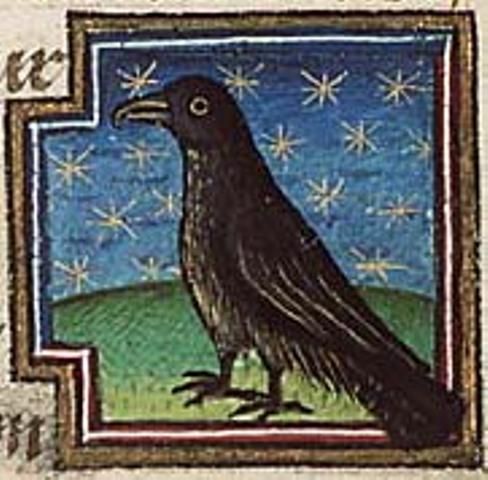















Ogmios
Gaulish deity of eloquence, possibly of the underworld
Text Source
Lucian says Ogmios is equated to Herakles by the Gauls, who depicted him in a painting as an extremely old man with burned skin, with Herakles' attributes of the Nemian lion skin, a club, and a bow and arrow, with a chain from his tongue to the ears of several followers, attesting to his eloquence. His dark, sunburned face causes Lucian to compare Ogmios to Charon and Iapetus--gods of the underworld.
Inscriptions
The CIL notes that Ogl[aio] may be a mistake for Ogm[io], but this is only conjecture.
Pottery Source--a Sun god?
Ross mentions a pottery shard found at Rutupiae (Richborough, Kent) which features a figure with long curling hair and rays proceeding from his head, holding a whip (which she identifies with Sol Invictus), with the name Ogmia. However, the connection to the sun may not mean Ogmios (or Ogmia) is identified as a sun god, but refers back to his "sunburned" face.
God of the Underworld/Ancestor God
Ogmios' identification as a god of the underworld is based on several attributes:
Two of the above features point to Ogmios' role as an ancestor god:
Connections to other figures
The attributes of eloquence and strenght point to a clear analogue with the Irish figure Ogma, champion of the Tuatha Dé Danann and inventor of the Ogham alphabet. There is also a linguistic connection between Ogmios and the Welsh Eufydd ap Dôn; Birkhan gives the progression of Ogomios/Ogumios < Ogmios < Oumid < Euuyd < Eufydd. He may also be connected to Hefydd Hen (spelled Heueyd Hen in the manuscripts), father of Rhiannon, whose epithet hen means "old"--again, connecting to Ogmios' depiction as aged.
Another connection is found with the aforementioned Donn. Zeidler notes
However, unlike Ogmios (or Ogma for that matter), Donn is not associated with eloquence. In fact, it is the opposite--he insults Ériu, which causes the Milesians to retreat.
Another Irish figure similar to Ogmios is Fénius Farsaid, whom the Auraicept na nÉces says was an ancestor of the Gaedil, going back further than the Milesians. Fénius is described as the inventor of both ogam(!)and Gaelic.
SOURCES
Anwyl, E. "The Four Branches of the Mabinogi" Zeitschrift für celtische Philologie. band II. Max Niemeyer: London, 1899. p 133
Birkhan, Helmut. "Ogmios". Celtic Culture: a Historical Encyclopedia. edited by John Koch. p. 1393.
Corpus Inscriptionum Latinarum. vol. XIII.
Lucian. The Works Of Lucian Of Samosata: Complete With Exceptions Specified In The Preface. Vol.III. Translated By H. W. Fowler And F. G. Fowler. Oxford University Press, 1905. From Project Gutenberg.
Rhys, John. "All around the Wrekin" Y Cymmrodor. vol. XXI. 1908. p 62.
Ross, Ann. Pagan Celtic Britain. Chicago: Academy Chicago Publishers, 1967. pg 477.
Zeidler, J. "Ancient and Medieval Celtic Myths of Origin". from the 17th Irish Conference of Medievalists, 2003. URL: www-alt.uni-trier.de/uni/fb2/philologie/17icm.pdf

Back to "O" | Back to JCE
Home
Mary Jones © 2008